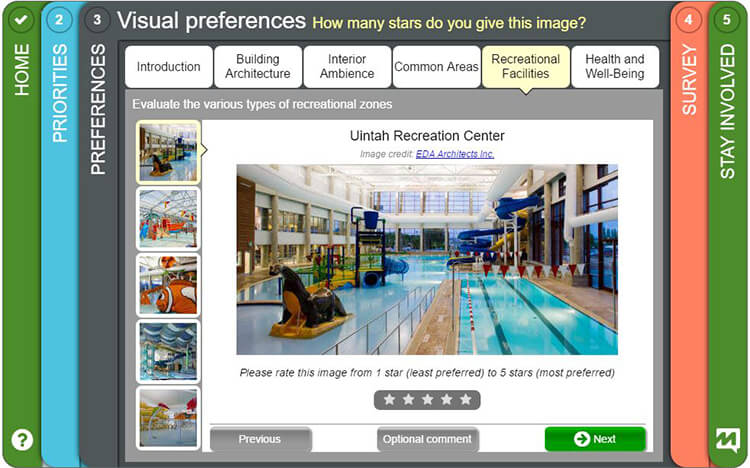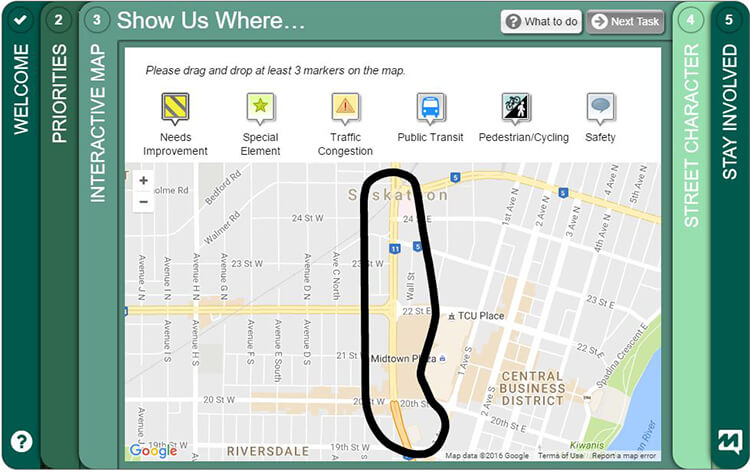[WEBINAR] Online Community Engagement for DOT’s & MPO’s: STIP/TIP Case Studies & Best Practices featuring NCDOT

This highly visual webinar features the North Carolina Department of Transportation. They discuss the innovative public involvement approach used for the NCDOT State Transportation Improvement Program (STIP) 2018-2027. The process yielded unprecedented results and is being recognized as an example of best practices to help guide DOT’s and MPO’s across the US for their own STIP and TIP updates.
Agencies across the country know how challenging it can be to collect informed and constructive public input to guide their STIP and TIP updates. Learn firsthand how NCDOT combined online and targeted face to face community engagement to involve more community members than ever before to help inform the 10-year plan. They share advice for agencies seeking to improve the diversity and effectiveness of their community engagement.
The session also showcases other projects from DOT’s and MPO’s that have used online engagement software to improve public involvement using cost-effective tools. Participants walk away with best practices and practical tips to guide their agency towards the successful application of online community engagement.
Watch Recording
View Slides
This webinar featured three presenters: Dave Biggs from MetroQuest followed by Jamille Robbins and Anamika Laad from the North Carolina Department of Transportation.
New Illinois DOT Report: 8 Recommendations to Enhance Quality Engagement
This new report is an excellent guide to help transportation agencies in their efforts to enhance the quality of community engagement. This post provides a summary of the recommendations and a case study from MNDOT that does an excellent job using digital tools to enhance public involvement. You’ll also find a link to the full report. Read the post here.
Q&A
There were many great questions that were addressed at the end of the session. Here are the questions that didn’t have time to address or that came in after by email following the session.
Questions for Dave from MetroQuest
Q: We are looking for ways to improve our outreach and the software looks interesting. What is the best way to get more information about MetroQuest and pricing?
A: [From Dave] I apologize for not being able to provide more in-depth information about MetroQuest due to the educational nature of this session. The best person to speak with is Derek Warburton at MetroQuest (by email to derek.warburton@metroquest.com, or toll free phone: 1-855-215-0186. Derek will be pleased to make sure you get the information you need. In the meantime, here is a quick video to give you a better sense of the software.
Q: Has the tool ever been adapted to gather input about a specific project rather than long range planning?
A: [From Dave] Yes, MetroQuest is frequently used for site plans, specific projects, corridor studies, park plans etc. To contrast the examples I showed during the webinar here are two other examples that you are free to play around with. These are not collecting data so feel free to click around all you like. If you are curious to see other examples or have a specific project type in mind please let me know and I’ll be happy to help.
This first project is an engagement process for the development of a recreation center.

The second is a corridor study for 5 block section of road.

Questions for Jamille and Anamika from NCDOT
Q: Do MPOs in NC gather public input on the projects sent to NCDOT prior to the STIP public involvement process?
A: [From Jamille and Anamika] Yes, as a part of the process, they are responsible for conducting their own PI for preliminary point allocations and then finalize them based on the input.
Q: What were the challenges that this effort encountered? How did you address the challenges if any?
A: [From Jamille and Anamika] The only challenges we faced were in the inevitable hiccups in the development of the new functionality. Effective and continuous communication with the stakeholders of the process made it easy.
Q: How did the demographic participation change [with this type of outreach]?
A: [From Jamille and Anamika] Jamille talked about this in his presentation on the age cohort slide. We saw more of the young parents (25-40) participate (mostly due to the outreach and the online presence), who are otherwise busy in evening routine or kid activities. Even 4% of ‘under 25’ participation was a success.
Thanks again for your interest and participation in this webinar.